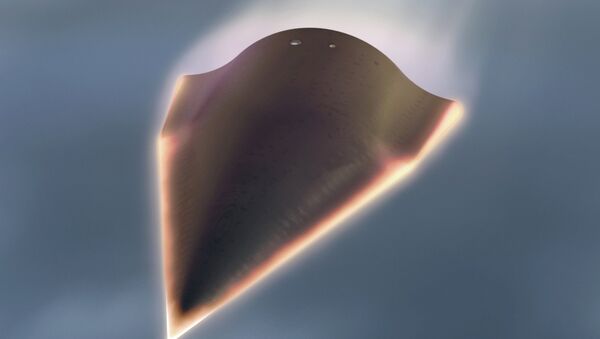MOSCOW, December 5 (Sputnik) – China has conducted yet another test of its new Hypersonic Glide Vehicle (HGV) dubbed by the Pentagon WU-14, according to The Washington Free Beacon website.
The test is the third in the series of launches of the new ultra-high speed vehicle capable of travelling up to eight times the speed of sound and dodging the US anti-missile defense system, following the two previous launces of January 9 and August 7.
The test has been monitored by the US intelligence agencies.
“We are aware of reports regarding this test and we routinely monitor foreign defense activities,” the Washington Free Beacon quotes Marine Corps Lt. Col. Jeff Pool as saying. “However, we don’t comment on our intelligence or assessments of foreign weapon systems.” he added.
Lt. Col. Jeff Pool also noted that the Pentagon has encouraged China to adopt greater openness with regard to its defense investments and military objectives, in order “to avoid miscalculation.”
The previous tests of the glide vehicle have proved that the WU-14 is able to carry nuclear warheads at a speed above Mach 10, or 12,359 kilometers per hour.
The HGV is intended to be less susceptible to anti-ballistic missile countermeasures than conventional reentry vehicles. Normal reentry vehicles descend through the atmosphere on a predictable ballistic trajectory — their high speeds make intercepting them extremely difficult.
But by the late 1980s, however, several countries had begun to develop interceptor missiles that were designed to destroy these ballistic reentry vehicles.
A hypersonic glider like the HGV could pull-up after reentering the atmosphere and approach its target in a relatively flat glide, lessening the time it could be detected, fired at, or (if the initial attack failed) reengaged. Gliding makes it more maneuverable and extends its range.
A vehicle like the WU-14 could be fitted to various Chinese ballistic missiles, such as the DF-21 medium-range missile and the DF-31 and DF-41 intercontinental ballistic missiles, extending their ranges from 2,000 km to 3,000 km and 8,000 km to 12,000 km respectively.
The second test of the vehicle turned out to be a failure, as it broke apart soon after launching.

